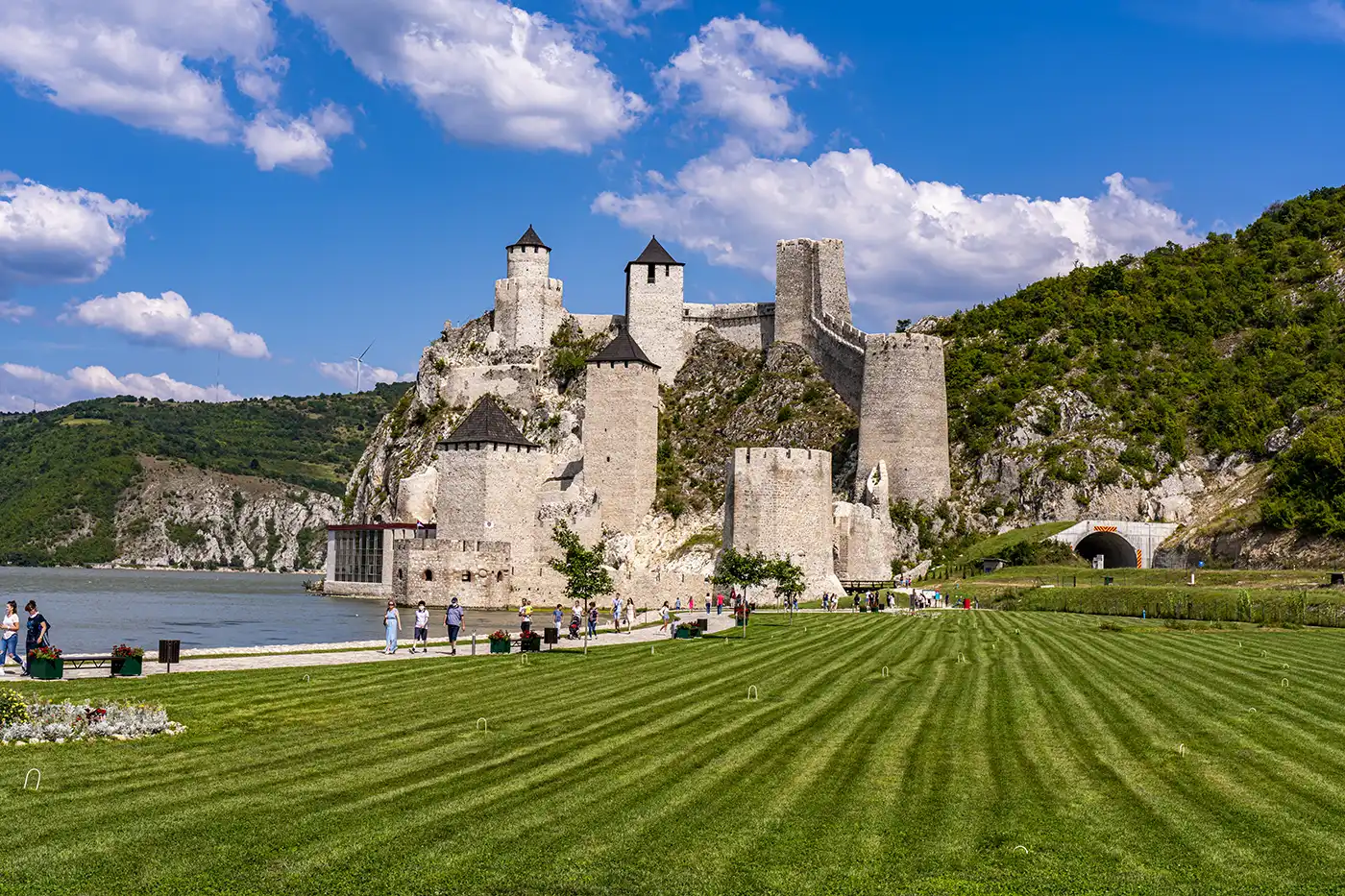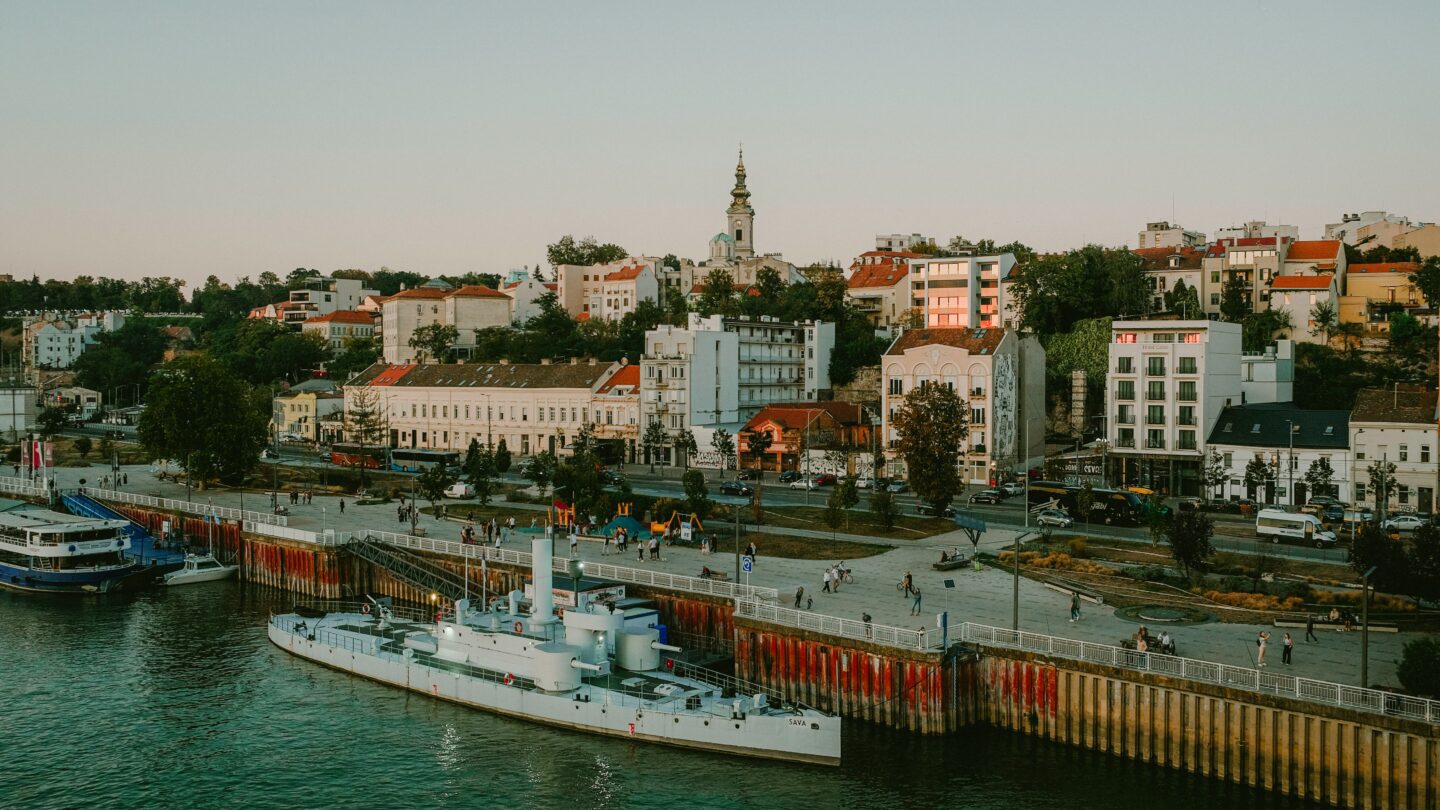
Traveling to Serbia? Look no further. In this Belgrade tourist guide, I cover the ins and outs of traveling to the country, where to stay, and what to see/do in the capital. While I spent over a week venturing around the country and along the Romanian border, Belgrade was always my hub and makes for the perfect spot to stay for day trips and Serbian culture.
Before we dive in, let’s address the elephant in the room. If you scour the internet, you’ll probably find some opinions that Serbs aren’t friendly, the country is dangerous, and it hasn’t recovered from its tumultuous past. While certainly not as touristy as Western Europe, the charm of Eastern Europe is due in part to its history, culture, people, and ability to rise from the ashes. Serbia is no exception.
With anti-tourism on the rise in so many European countries, I traveled to Serbia to explore a different side to the continent with a community of people openly welcoming tourists!
Still hesitant? Here are 6 things to know-before-you-go to Serbia!
Belgrade Tourist Guide On-The-Go
🗺️ Location: Belgrade is the capital city of Serbia (a country in the Balkans)
💸 Currency: The Dinar is the local currency used in Serbia
🏨 Where to Stay: To be near everything, stay at Boutique Hotel Museum, Belgrade
⛅ Best time to visit: For warmer temps, visit in the Spring and summer
If you’re short on time, one of the best ways to see Belgrade is on a 3-hour walking tour of the city with a local. Some of the sites you’ll see include: Skadarska Street, Kalemegdan Fortress, the Military Museum, and Ruzica Church.
If you have more time, do a short trip to Novi Sad and Sremski Karlovci– you’ll get the charming city vibes and wine region in one day (and it’s only around an hour from Belgrade).
Traveling to Belgrade: Logistics You Need To Know
A landlocked country in the Balkans, there are various ways of traveling to Belgrade from the U.S., with non-stop flights leaving New York daily via Air Serbia- the trusty airline of the country. If you’re already in Europe, budget carriers or train travel are the way to go.
I personally flew from Boston to Belgrade’s Nikola Tesla Museum, with a layover in New York. Air Serbia is a basic carrier with great service on-board. Meals were average, but we did get free alcoholic beverages which is always a plus. What’s nice about Serbia still being a relatively underrated country for tourists is the amount of space I had on the flight- a whole row to myself!
The customs line can sometimes be long but I managed to get through in under 20 minutes. If you’re traveling to Belgrade from the U.S., no visa is needed under 90 days.
Nikola Tesla Airport To The City Center
The airport itself is located around 12 miles from Belgrade and the ride is about 25 minutes or so depending on traffic. Uber is not in Serbia yet, but there are many taxis outside.
If you want to just get to your hotel or the city, then take bus #72 to Zelani Venac in the city center. It runs every 35 minutes or so from departures, and takes 45 mins to get into Belgrade. There’s a faster bus, but this will most likely be the closest to where you’re staying. Tickets cost about 145 RSD (less than $2).
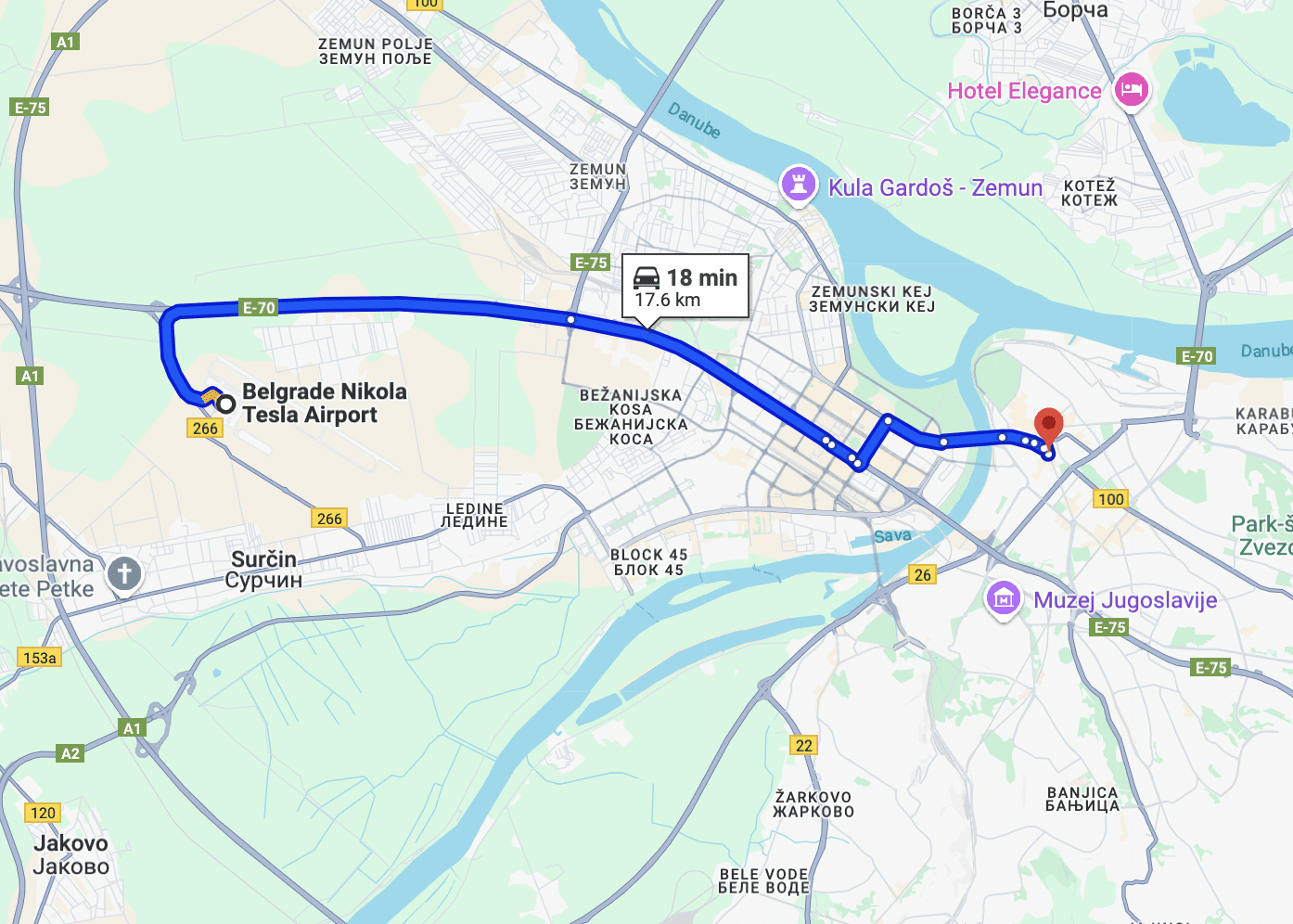
Where To Stay When You’re Visiting Belgrade
Old Town/Stari Grad: Best for First-Timers
This wouldn’t be a very helpful Belgrade tourist guide if I didn’t mention the heart and soul of the city- the Stari Grad area. With local businesses, cobblestone streets, and vendors, there’s always something happening in the Old Town.
If you hear music emanating from somewhere you know you’ve reached Republic Square. Many of the side streets around Stari Grad connect to the square and have an array of quirky stores, antiques, book shops, and bars. Visiting a local Kafana (traditional Serbian restaurant, usually with music) in Belgrade is a must, and some of the best can be found in the bohemian Skadarlija neighborhood in the Old Town.

Located just steps from Republic Square and a slew of restaurants/bars, Boutique Hotel Museum is a charming spot with a quaint lobby-bar and restaurant (that’s home to a delicious breakfast buffet).
What To Do In Stari Grad
- Explore Belgrade with a local on a walking tour of the city
- Have fun at a local Kafana in Skadarlija (I recommend Dva Jelena)
- Visit Ruzica- one of the oldest churches that dates back to the 15th century
- Learn the history of Belgrade’s Fortress and see the old military tanks/cannons
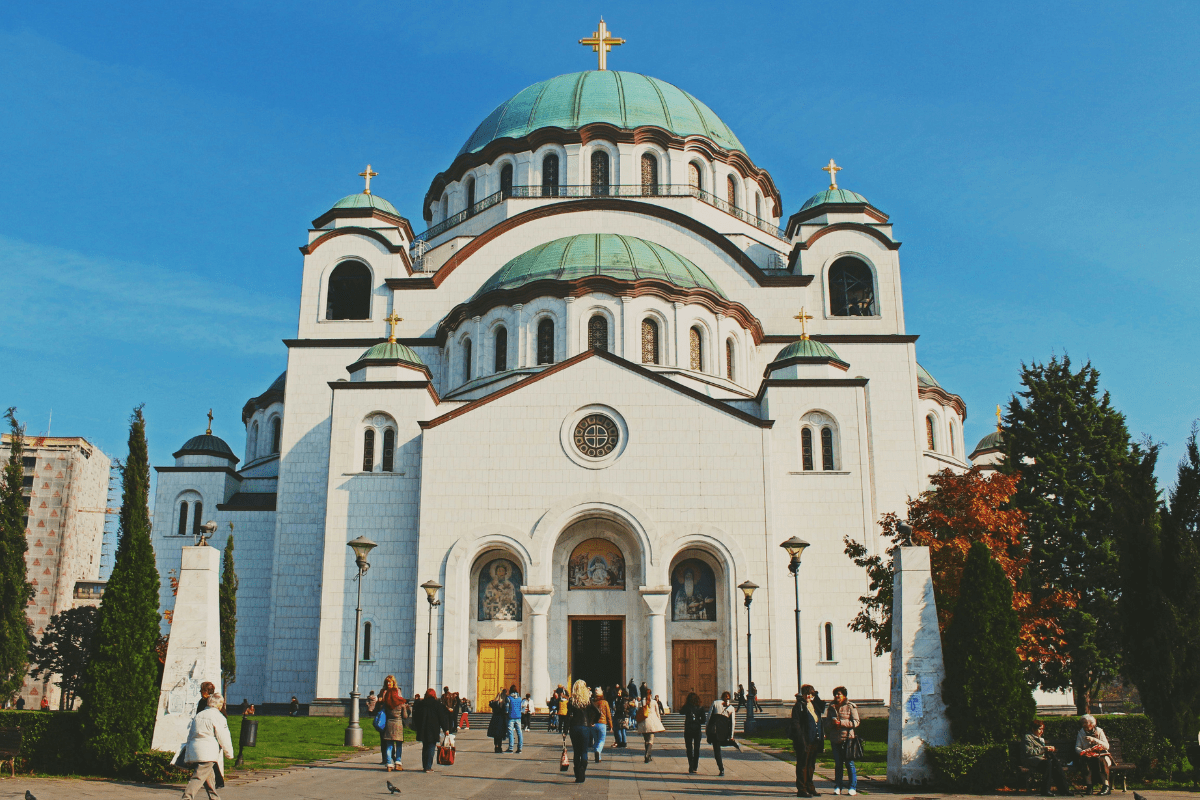
Vracar: Best for Families
You know when you’ve traveled and want a relaxing refuge that’s still close to the action? Vracar (Varchar) is just that. About a mile outside the Old Town, this neighborhood is ideal for families or those wanting a local feel.
Today, the most iconic landmark is undoubtedly the Temple of Saint Sava. One of the largest Orthodox churches in the world, the Temple is adorned with high ceilings and gold accents throughout. Vracar has a local feel about it and is home to one of the city’s oldest open-air markets, Kalenić Market.
What To Do In Vracar
- Visit the beautiful Temple of Saint Sava
- Partake in experiments at the Nikola Tesla Museum
- Enjoy a day strolling through Karađorđev park
- Shop like a local at Kalenić Market
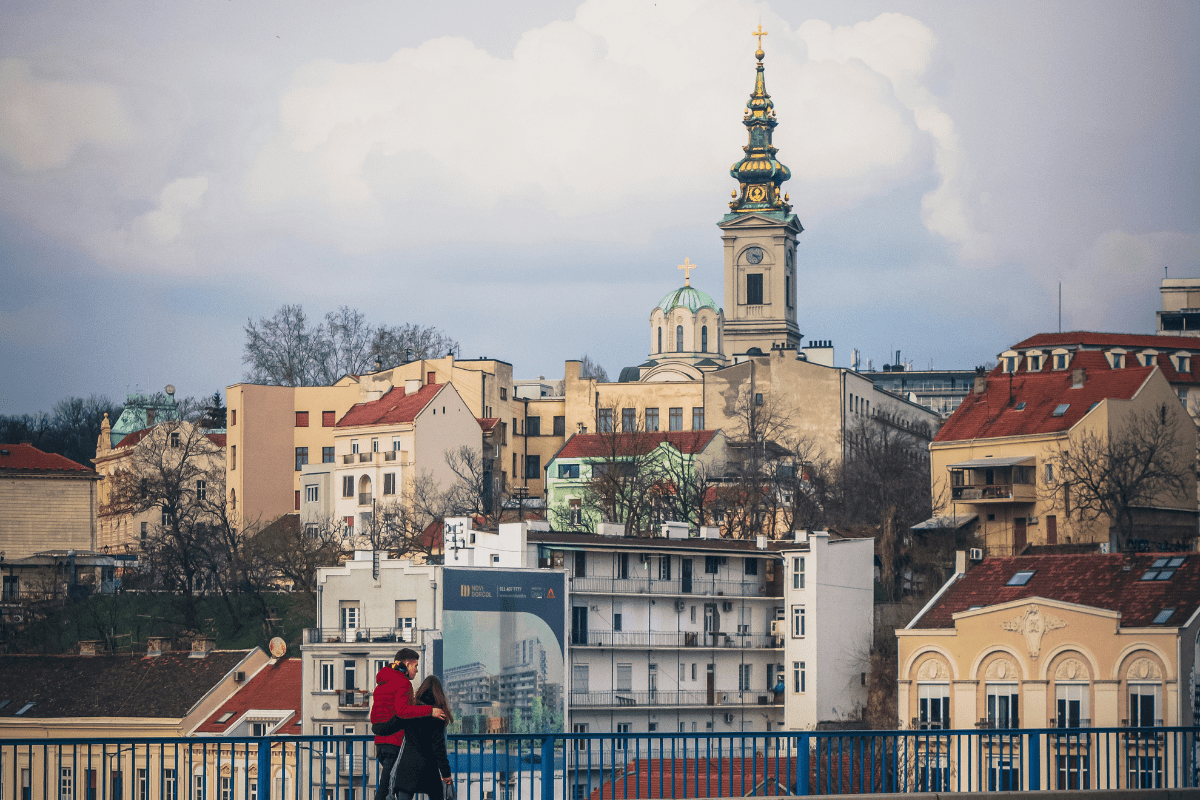
Dorćol: Best for Art-Lovers And A Night Out
One of the coolest neighborhoods in Belgrade, Dorcal is alive with quirky cafes, restaurants, bars, and trendy shops. Stretching from Skadarlija to Kalemegdan Park and from Knez Mihailova to the banks of the Danube, there’s no shortage of streets to explore and things to see- it’s especially nice on a warm day along the river.
Once a hub for various nationalities, Dorćol was home to Turks, Serbs, Jews, Dubrovnians, and Roma people. Exploring its vintage shops, museums, and lively bars, you’ll see remnants of those who once occupied the area in small ways. If you’re looking for a night out, Strahinjića Bana Street and the surrounding alleyways always have something going on until around dawn.
What To Do In Dorcal
- Visit the Museum of Science and Technology
- Wander around Dorcol Platz and enjoy the art, music, and markets
- Try some Rakia at the Urban Distillery
- Browse the art and bars of Silosi
- Grab some brews and vibes at Docker brewery
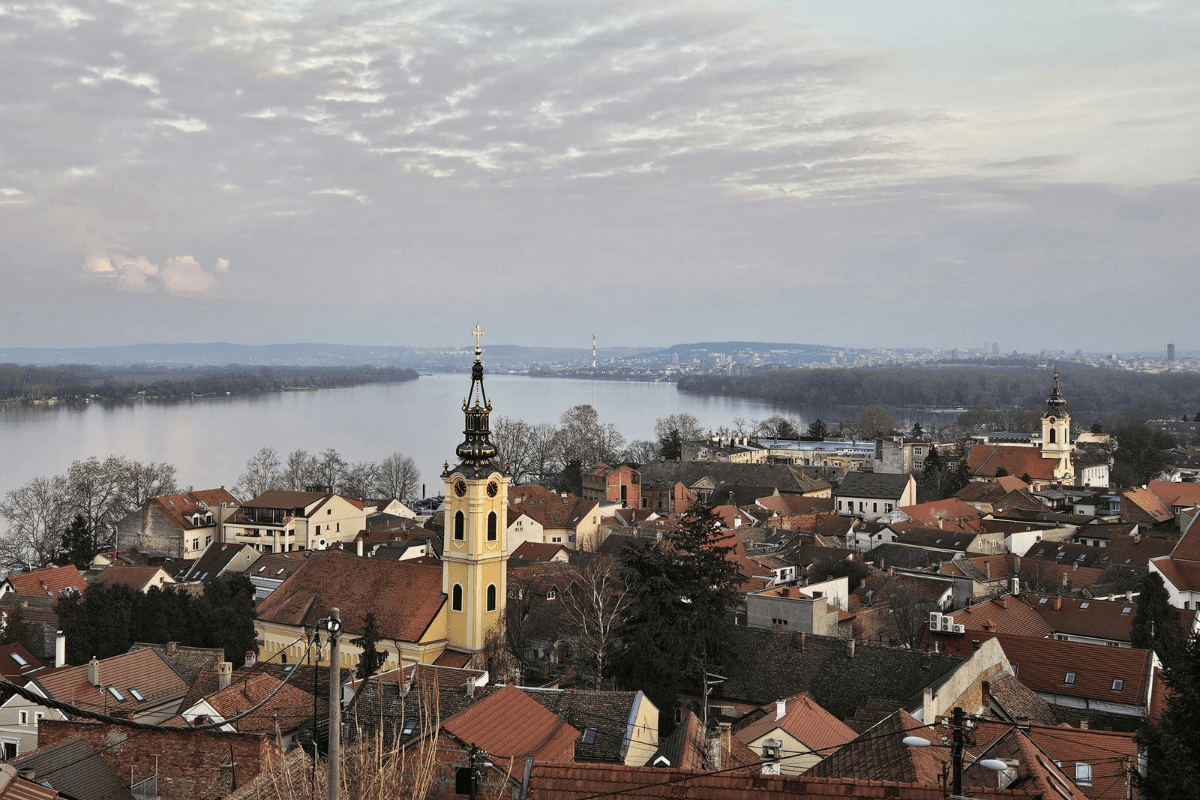
Zemun: Best for Laid-Back Vibes
Having joined with Belgrade in 1934, Zemun still feels like its own independent city in many ways. Lesser visited than Belgrade’s city center, it’s very easy to spend a few hours strolling along the cobblestone streets and admiring the old-town vibes of Zemun.
You’ll know you’ve arrived when you see a display of charming buildings and terracotta-style roofs, but how do you get there from Belgrade? Bus, train, or taxi- whichever you decide will get you there in less than 30-minutes!
What To Do In Zemun
- Take in the beauty of Gardos Tower
- Walk along the Danube River
- Paddleboard in Zemunski Park
- Enjoy a show at Madlenianum theatre
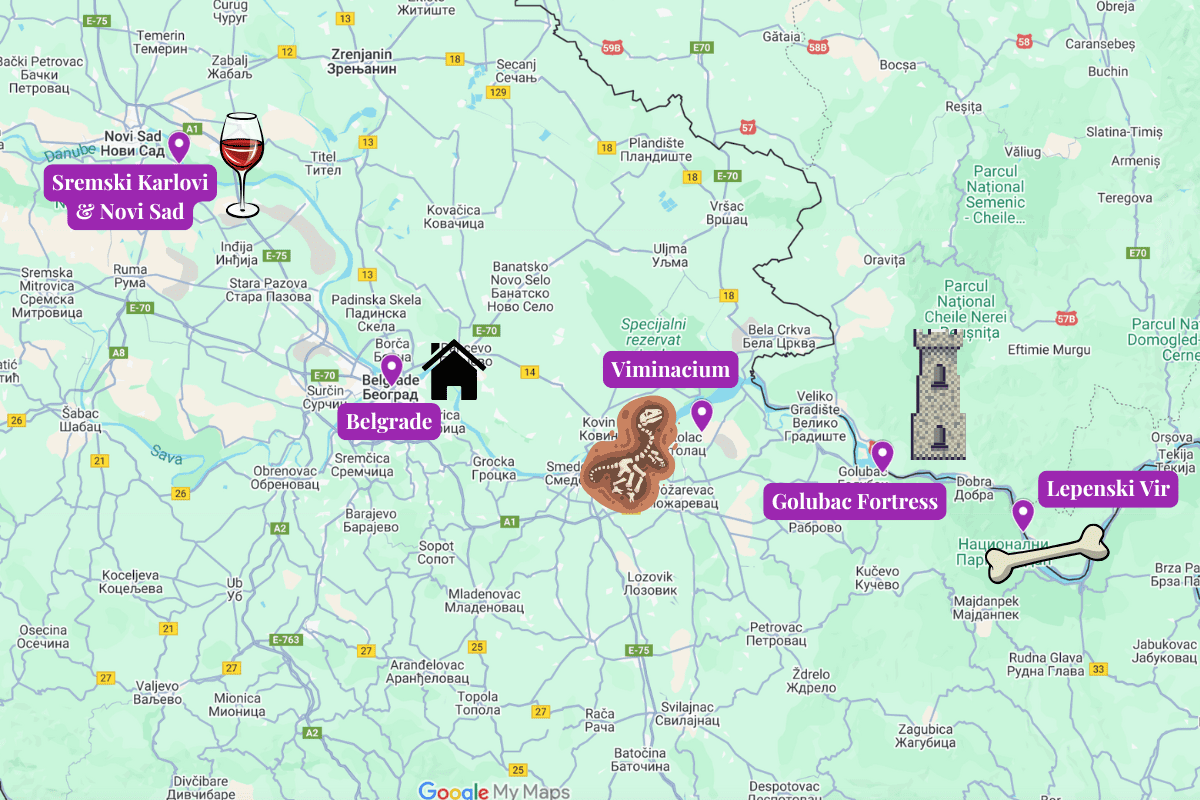
Travel Beyond Belgrade
Though there’s plenty to keep anyone entertained in the heart of Serbia, this Belgrade tourist guide is for those also looking to get off-the-beaten-track a little and explore outside of the capital. Often overlooked by tourists, there are plenty of wineries, archaeological sites, and lesser-visited cities/towns that are worth exploring.
Below are a few of the places I visited and would definitely advise visiting!
The Wineries Of Sremski Karlovci
Just outside of Novi Sad you’ll find the small town of Sremski Karlovci. Everything seems to move slower here, and sometimes the best thing to do is sit at a local restaurant and admire the colorful architecture with a glass of locally-produced Serbian wine.
A wine galaxy that’s home to over 15 wineries and wine cellars, you’ll have your pick of the bunch (no pun intended). Just steps from the town center, the Museum of Beekeeping and Winery Živanović offers tastings of wine, cheeses, and honey in their charming building. What’s more, the museum downstairs shows a glimpse of the history and some intriguing artifacts that still remain intact.
Here’s a map of the wineries to visit in the area!
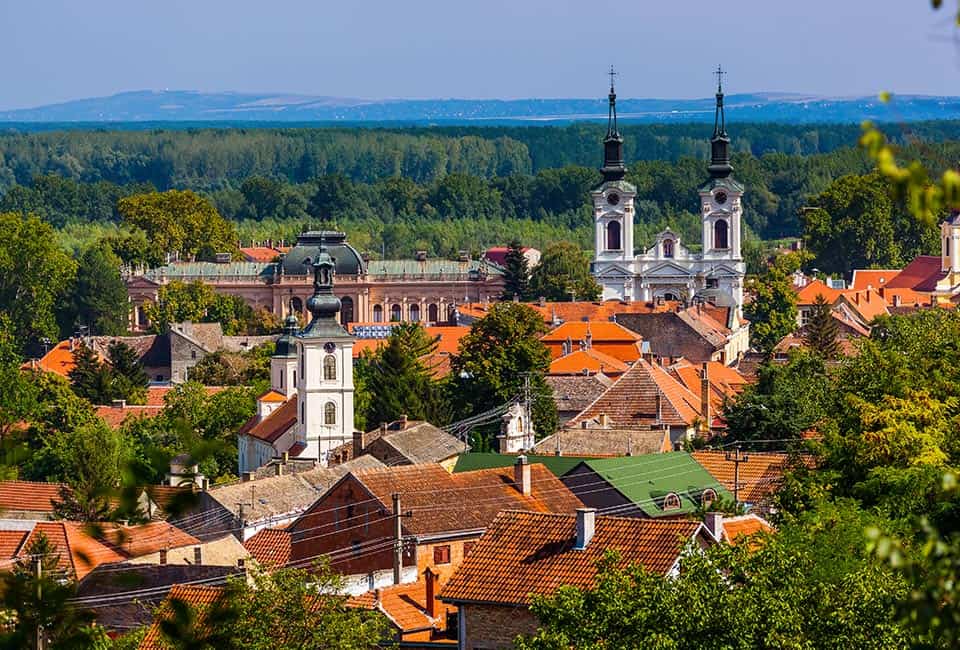
Viminacium And Lepenski Vir
History buffs rejoice! Over an hour outside of Belgrade you’ll find Roman ruins and the military site of Viminacium. Stroll around the Roman baths and amphitheater, or head over to the Mamut Park where you’ll find the skeletal remains of prehistoric mammoths. Continue the historic tour and venture along the banks of the Danube, across from Romania, to discover Europe’s oldest settlement.
Golubac Fortress
Golubac is a charming town located in eastern Serbia, known for its towering medieval fortress. On the banks of the Danube River, you’ll get unobstructed views of Romania just across the way on a clear day. The river on one side and forest on the other, the drive up to the fortress is beautiful. Built in the 14th century, it comprises 10 towers protecting three internal compounds- and makes for quite the view if you climb to the top.
